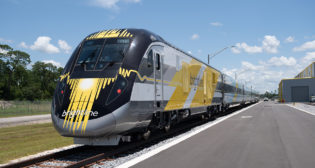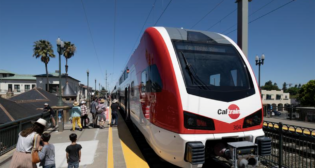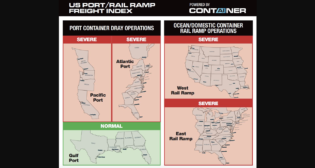
Electric Harley Davidsons, NASCAR track upgrades, chick flicks, Puerto Rican rum—and small-road tax credits
Written by William C. Vantuono, Editor-in-ChiefThe House and Senate approval of a 150-page measure keeping us from going over the so-called fiscal cliff contains some $100 billion in tax breaks for a variety of special interests, including regional and short line railroads.
For regionals and short lines, the measure is retroactive to Jan. 1, 2012 and continues through Jan. 1, 2014. It creates a strong incentive for them to invest in track rehabilitation.
The provision in the fiscal-cliff bill is worth an estimated $331 million over two years, allowing regional and short line railroads a 50 cent tax credit for every $1 in improvements for owned and leased track.
A similar tax credit—first enacted by Congress in 2004—expired at the end of 2011, and regionals and short lines have lobbied strenuously for its return since.
While the Senate Finance Committee approved the retroactive tax credit—as Section 45G—in a measure voted out of committee in August 2012, the bill never reached the Senate floor, while the House failed to take action. Many despaired that Congress, desperate to shore up the federal treasury and reduce the nation’s debt, would abandon any effort to renew those tax credits.
As Congress teetered on the so-called fiscal cliff into the New Year, the bill that finally emerged and was approved—first by the Senate early Jan. 1 and by the House before midnight Jan. 1—tacked on to the final bill the earlier Senate Finance Committee measure, extending more than $100 billion in tax credits for regionals and short lines, Hollywood movie producers, NASCAR, rum produced in Puerto Rico and the U.S. Virgin Islands, electric motorcycles, and even algae growers that produce cellulosic biofuel.
As approved by the House and Senate, the legislation provides that:
• The credit is limited to the product of $3,500 times the number of miles of railroad track (1) owned or leased by an eligible taxpayer as of the close of its taxable year, and (2) assigned to the eligible taxpayer by a Class II or Class III railroad that owns or leases such track at the close of the taxable year.
• Each mile of railroad track may be taken into account only once, either by the owner of such mile or by the owner’s assignee, in computing the per-mile limitation. The credit also may reduce a taxpayer’s tax liability below its tentative minimum tax.
• Qualified railroad track maintenance expenditures are defined as gross expenditures (whether or not otherwise chargeable to capital account) for maintaining railroad track (including roadbed, bridges, and related track structures) owned or leased as of Jan. 1, 2005, by a Class II or Class III railroad (determined without regard to any consideration for such expenditure given by the Class II or Class III railroad which made the assignment of such track).
• An eligible taxpayer means any Class II or Class III railroad, and any person who transports property using the rail facilities of a Class II or Class III railroad or who furnishes railroad-related property or services to a Class II or Class III railroad, but only with respect to miles of railroad track assigned to such person by such railroad under the provision.
• The terms Class II or Class III railroad have the meanings given by the Surface Transportation Board.
These tax credits are significant, with the $331 million in tax credits over two years representing more than 8% of the combined annual revenue of regional and short line railroads.
Older heads may recall that the 1981 Economic Recovery Tax Act (ERTA) provided tax credits in excess of $2.5 billion for railroads—primarily Class I’s, as the explosive growth of regional and short line railroads had not yet begun. ERTA changed the railroads’ method of accounting for tax purposes, permitting rapid depreciation of an investment base in track that had never been allowed to reflect depreciation. The so-called frozen asset base created by the previous retirement-replacement-betterment accounting system was allowed by ERTA to be written off rapidly, using an accelerated five-year method that provided a one-time cash flow of $2.5 billion.
The substantially increased cash flow made possible unprecedented capital investment by railroads in track, yards, terminals, and research, allowing many railroads—especially Conrail—literally to lift track out of the mud.
Combined with the 1980 Staggers Rail Act, which partially reduced economic regulation of the industry, the two measures rehabilitated a financially teetering railroad industry, strengthened it financially, and allowed railroads to meet the nation’s growing demand for faster and on-time freight transportation.
The Association of American Railroads hailed ERTA as opening a curtain for a new railroad golden age—a prediction proving to be not far off the mark.



